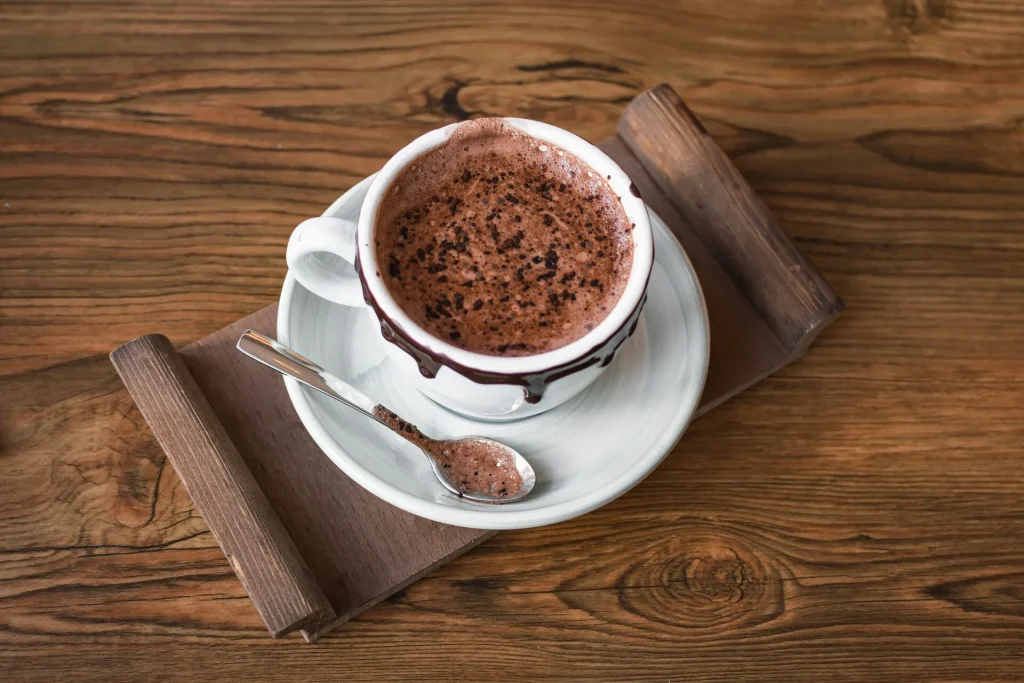Hot chocolate is one of the most comforting drinks enjoyed during the colder months across Britain and beyond. It fills homes with warmth, brings smiles at winter festivals, and features at seasonal gatherings for families and friends. Yet this delightful drink has a story that stretches far beyond frothy mugs and creamy toppings. To understand why it became a winter favourite at gatherings and festive markets, we must explore the origins of hot chocolate from Aztec royalty to winter events and discover how it evolved through time.
This story reveals how a simple beverage travelled across continents, transformed through cultures, and captured imaginations. It combines history, cultural appreciation, culinary evolution and seasonal enjoyment.
A Royal Drink in Ancient Mesoamerica
The Maya and Aztecs respected hot chocolate before it became a comfort drink. Archaeology reveals that cocoa cultivation began around 1500 BCE. The Maya are credited with creating chocolate drinks by grinding roasted cacao beans into a paste and adding water and spices. Early chocolate was bitter and served cold, unlike the delicious kind we know today.
Chocolate became vital to cultural and religious ceremonies. Maya priests gave chocolate drinks to the gods during rites, believing it was life-giving. After becoming powerful, the Aztecs embraced and developed these practices. They considered chocolate a royal and warrior drink. It symbolised power, status, and wisdom.
Cacao as Currency and Culture
The Aztecs used cacao beans as currency. Cocoa beans were used to buy vegetables, fruit, and apparel in the past. Cocoa was integral to the Aztecs’ economy and religion.
Montezuma daily drank numerous cups of chocolate from a golden goblet. It boosted his vigour, he considered. With chilli peppers, vanilla, and achiote, he sipped a scarlet drink that symbolised power.
Ancient chocolate drinks were distinct from modern hot chocolate. This sugar-free drink was thick and frothy. Elegant guests were served the foam, the most sumptuous element, as a token of respect.
Spanish Exploration and the Journey to Europe
When Spanish explorers arrived in Central America in the sixteenth century, hot chocolate changed. In the Aztec court, Hernán Cortés and his men saw cocoa. The drink’s harshness initially surprised them, but they saw its commercial potential. In the 1520s, Cortés transported cacao beans and chocolate-making equipment to Spain, starting chocolate’s European adventure.
Spanish elites once kept chocolate a secret. Mostly aristocrats and religious people appreciated it. Spanish monks may have helped Europeanise the drink. They tried cinnamon, nutmeg, and sugar from fresh Caribbean plantations. Hot chocolate became a luxury because this made it more tasty.
Sweetening a Bitter Tradition
Chocolate was forever transformed by sugar. The sweetened variant travelled from Spain to Italy, France, and England by the mid-1600s. Chocolate was already considered luxurious and exotic at this time.
Hot chocolate was given for weariness and digestion throughout Europe. It was sometimes used in courtship rituals and believed to have amorous characteristics.
Transporting and producing chocolate grew easier as technology advanced. Enslaved workers built Caribbean and Central American cacao plantations. This dark chapter in chocolate history shows how global trade and societal inequity shaped luxury goods.
The Rise of Hot Chocolate in British Culture
Britain first embraced hot chocolate during the seventeenth century. It arrived in the same era as tea and coffee and soon became part of a new social trend. Chocolate houses began to open in London following similar venues in Paris and Amsterdam. These establishments quickly became popular among wealthy men who would gather to discuss politics, business and society while drinking cups of hot chocolate.
One famous venue was Whites Chocolate House on St James Street, which opened in 1693. It became known not only for its drinks but also for political discussions and gambling. Chocolate was expensive at the time, so it remained a luxury available only to those with wealth and social influence.
From Chocolate Houses to Winter Warmers
The Industrial Revolution changed hot chocolate again. In the 19th century, British producers developed cacao processing methods. The press Coenraad van Houten created in 1828 eliminated much of cacao’s natural fat. Cocoa powder was easier to blend with hot water or milk.
Later in the century, British chocolatier Joseph Fry created the first modern chocolate bar with cocoa powder and butter. These advancements made chocolate more affordable for families.
Families enjoyed hot chocolate at home, especially in cold weather. It became popular at parties, schools, and British seaside cafes. The Aztec nobility’s drink was now a common pleasure.
Modern Hot Chocolate and Winter Events Today
Today, hot chocolate has become a winter favourite across the world. People across the United Kingdom strongly associate it with Christmas markets, school fundraisers and outdoor celebrations. Families look forward to seasonal stalls serving steaming cups topped with whipped cream, marshmallows or grated chocolate.
At winter weddings and evening functions, hot chocolate stations have become a popular catering feature, often replacing or complementing traditional tea and coffee. Event services like Candy Buffets sometimes include custom hot chocolate bars offering flavour syrups and toppings to create a unique guest experience.
Why Hot Chocolate Remains a Seasonal Favourite
There is something uniquely comforting about hot chocolate. It evokes memories of childhood winter evenings and festive gatherings. It delivers a deep, satisfying flavour and suits every preference, whether you enjoy rich dark cocoa, sweet white chocolate or dairy-free versions made with oat or almond milk.
Hot chocolate also brings people together. It has a social quality that makes it ideal for outdoor celebrations, school fairs and charity events. Catering companies know this well, and some, like Candy Buffets, have introduced hot chocolate carts at corporate functions as a simple way to create a welcoming atmosphere.

